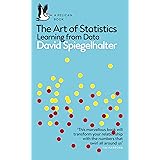Coefficient of Variation Example
Coefficient of variation Example and how to identify whether the variation is acceptable or not?
The coefficient of variation is the ratio of the standard deviation and the mean. Usually, it is expressed in percentages.
Below is the formula for the coefficient of variation:
CV=(Standard Deviation / Mean)*100
Higher CV indicates higher variation and lower CV indicates lower variation and more precise estimate.
As a thumb rule in the case of lab experiments <10% variation is acceptable and <20% in agricultural experiments.
Usage
It is a relative measure and most suitable to compare any two series. The coefficient of variation is the appropriate measure of dispersion.
Coefficient of Variation Example
The average of the data series is 12 and its standard deviation 0.25 with sample size n=6, then the coefficient of variation is
CV= (SD/Mean)*100
CV=(0.25/12)*100
CV=2.08 %
In this Coefficient of variation example, 2.08% indicates the variation is acceptable.
Standard Error
The standard error tells you how accurate the mean of any given sample from that population is likely to be compared to the true population mean.
When the preferred blunders increase, i.e., the approach is extra unfolding out, it turns much more likely that any given mean is an erroneous illustration of the actual populace mean.
SE=SD/sqrt(n)
SE=0.25/sqrt(6)
SE=0.04166667
The population mean is around Sample Mean+-1.96*SD
In this case,
12+(1.96*0.04166667)= 12.08167
12-(1.96*0.04166667)= 11.91833
The indicate population means is lies between 11.9 to 12.1.
Conclusion
The variation or quality of data can effectively measure based on these standard methods like the coefficient of variation, standard deviation, and standard error.
Differences between Association and Correlation





